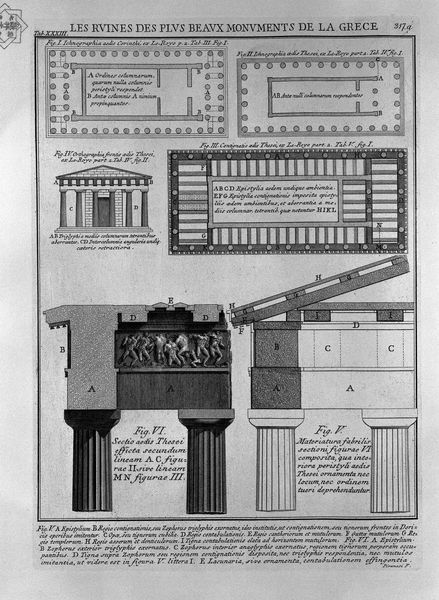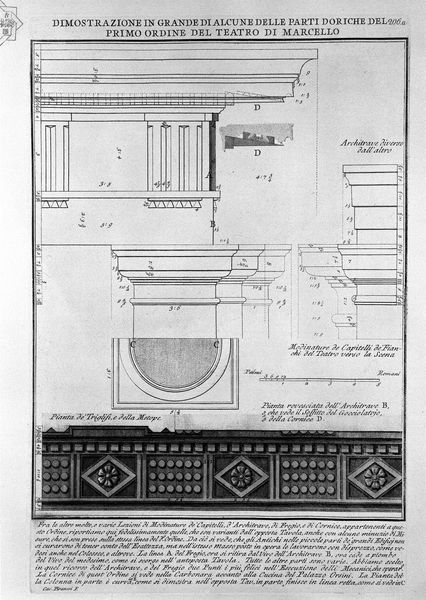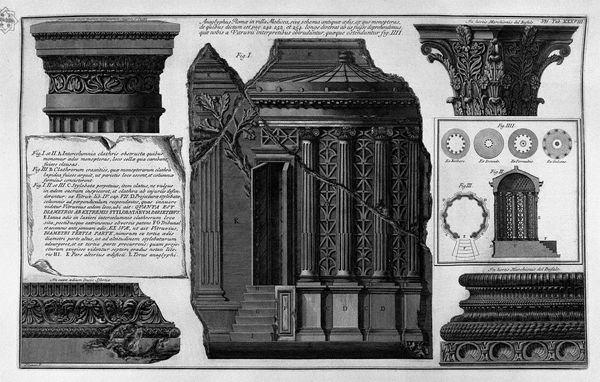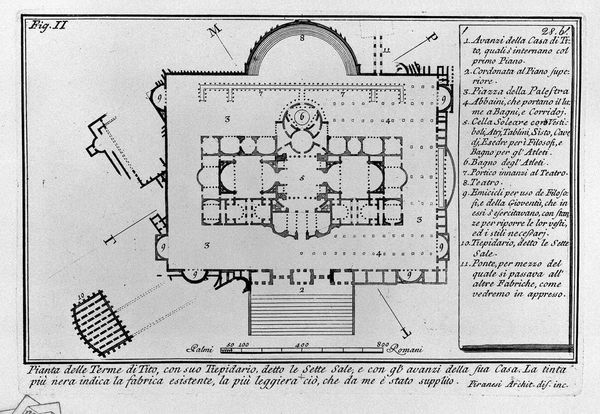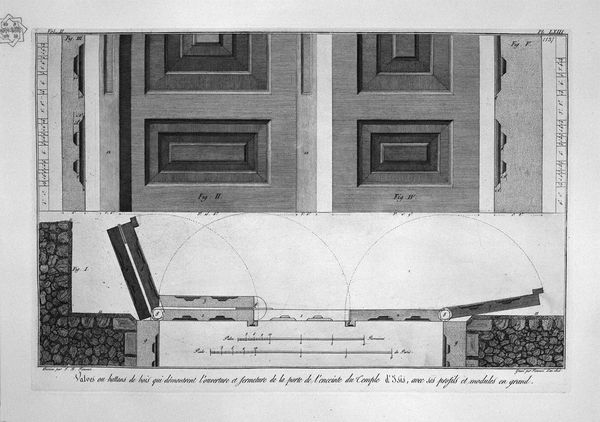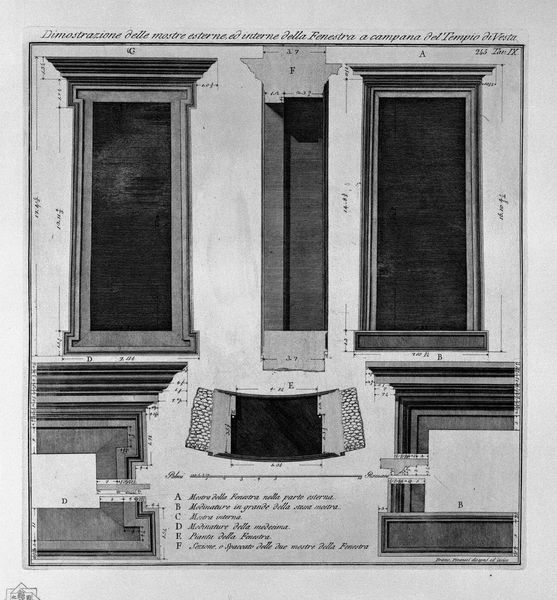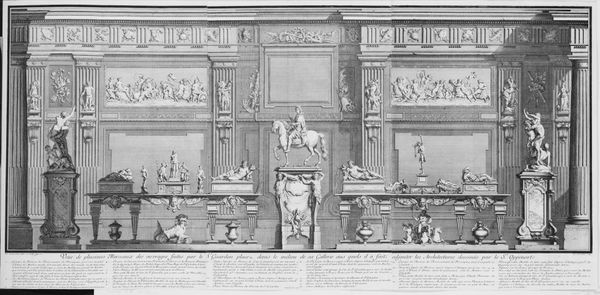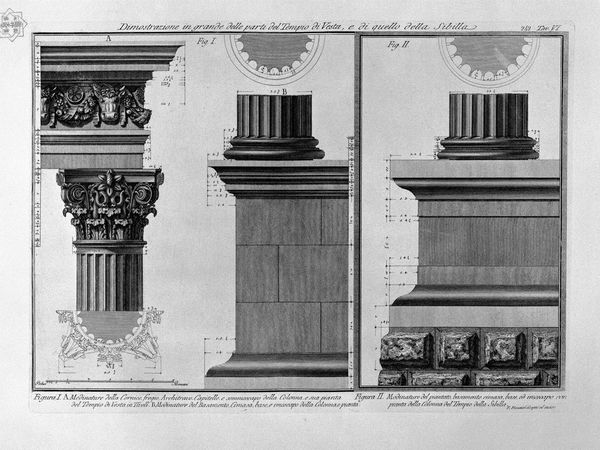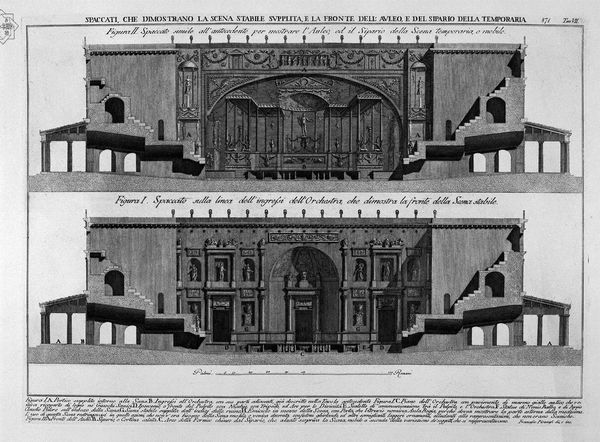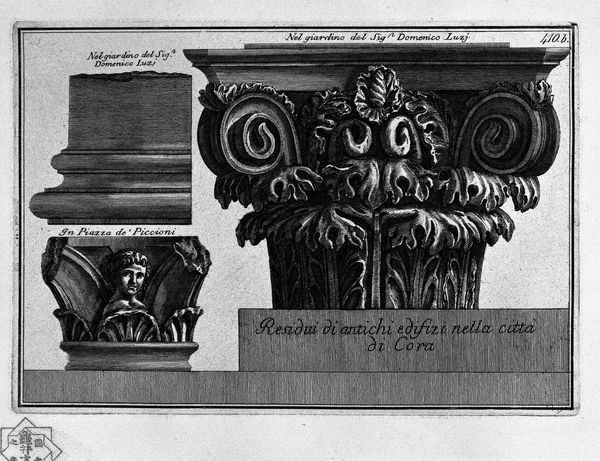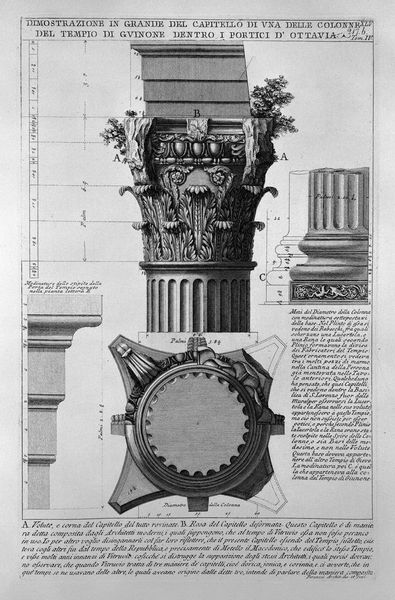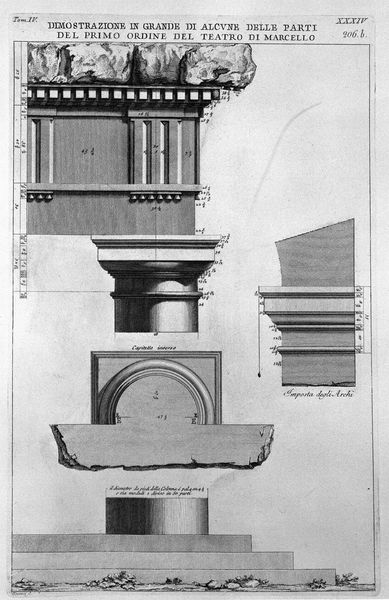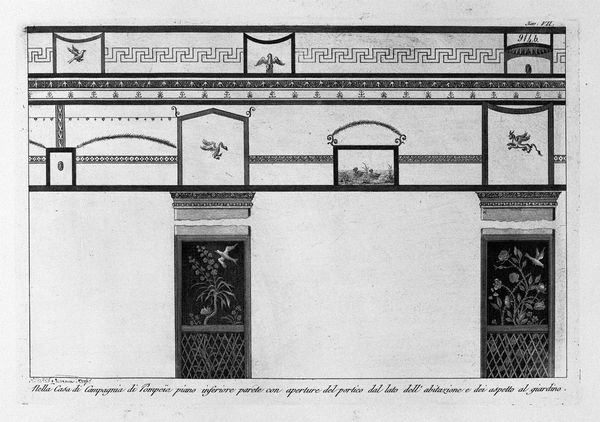
The Roman antiquities, t. 4, Plate XLIII. Vista of some of the great parts of the Portico d`Ottavia.
0:00
0:00
drawing, print, engraving, architecture
#
drawing
#
neoclacissism
# print
#
form
#
geometric
#
line
#
italian-renaissance
#
engraving
#
architecture
Copyright: Public domain
This print of architectural details was made in the 1700s by Giovanni Battista Piranesi. He used etching, a printmaking process, to create a highly detailed image on paper. Piranesi meticulously captured the textures and forms of the ancient Roman Portico d'Ottavia. You can see the weight of the stones suggested through the deep, precise lines that define each element, from the ornate capitals to the architrave. The etching process allowed for an incredible level of detail, mirroring the craftsmanship of the original Roman stonemasons. Consider the labor involved in both the ancient construction and Piranesi’s detailed documentation. The print isn’t just a record of the past, it's a testament to human skill across centuries. It makes us think about how knowledge and appreciation of craft traditions are passed down, evolving through different materials and methods.
Comments
No comments
Be the first to comment and join the conversation on the ultimate creative platform.
